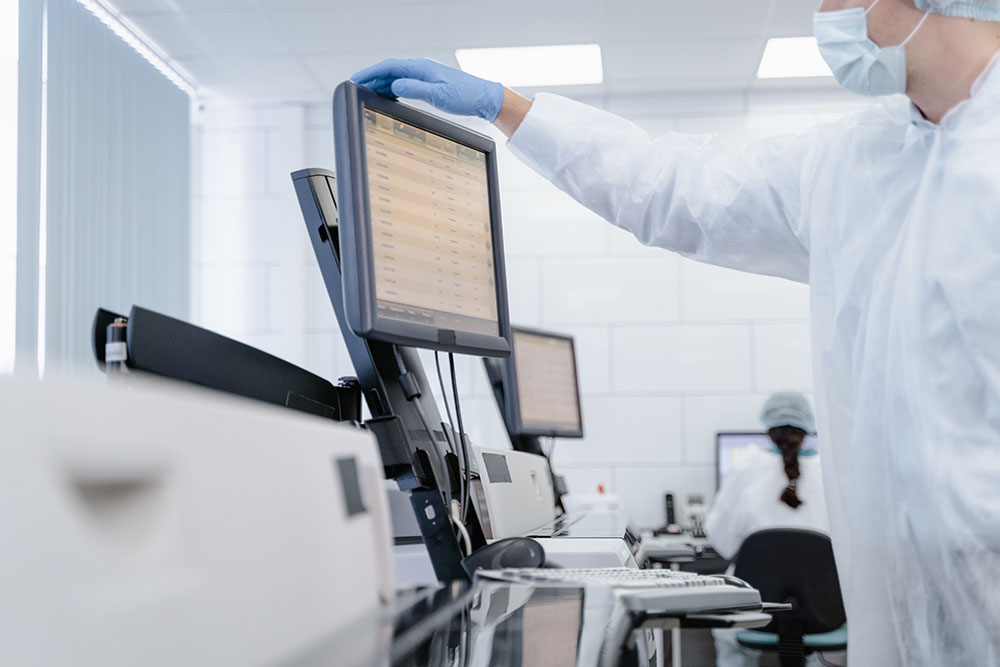The use of predictive analytics — the practice of applying data and statistical algorithms to make predictions about future outcomes and trends — is growing across industries. Since 2019, the global market for predictive analytics has grown by over $3 billion to reach $10.5 billion in 2022. It’s projected to reach more than $35 billion by 2027 — a strong compound annual growth rate (CAGR) of 21.9%. From the financial sector to the entertainment industry, business leaders are adopting this practice to guide their decision-making. And additional businesses will follow suit over the next few years.
In particular, predictive analytics is becoming increasingly popular with enterprises in the healthcare industry. This technology has a wide range of applications in the healthcare industry and can offer immense benefits. So how exactly do healthcare organizations apply predictive analysis? Here are some key details about predictive analytics in healthcare you should be aware of:
How Does Predictive Analysis Work?
No one can predict the future, right? Well, thanks to advanced analytics that combine historical and current data with statistical modeling techniques, you actually can. That’s not to say that the predictions these analytics tools yield are 100% guaranteed, though. More accurately, this technology is meant to help leaders and decision-makers gain a deeper insight into what’s likely to happen in the future.
The process starts with defining the problem. What are you trying to predict? From there, the data team collects and organizes the data that might be relevant to your query. Any predictive model needs relevant, reliable data to make useful predictions about future outcomes. The next step is to pre-process the data by removing anomalies or any other errors that occurred during data measurement and input.
Once they go through these initial steps, the data science team can either develop their own predictive models or use established analytics tools. The right solution for any given organization depends on its resources, time frame, and budget. They will connect the model to the data set and wait for the results. Never just take these results at face value, though. It’s vital to assess the results and ensure they make sense before incorporating them into decision-making within the company.
Healthcare Applications of Predictive Analysis
The specific ways a healthcare organization uses analytical tools including predictive analysis depend on its goals. Some common applications of this technology in the healthcare space include:
Reducing readmission
Readmission — when a patient has to return to the hospital within 30 to 90 days after discharge for the same (or related) care — is costly for insurers and hospitals alike. Medicare spends $26 billion each year on hospital readmissions. To try to reduce these numbers, Medicare set up the Hospital Readmission Reduction Program which subjects hospitals to heavy penalties for readmissions. Over 80% of hospitals in the program have received these penalties.
In other words, it’s in each hospital’s best interest to reduce readmission as much as possible. Hospitals can use predictive models to find trends that help determine whether a patient will be readmitted or not. If the models single out certain patients as high risk for readmission, the hospital can then devote additional resources to prevent that outcome. These models help hospitals understand why patients require readmission and assess each patient’s risk level. Equipped with that information, doctors and other healthcare providers can take targeted action to combat readmission.
Organizing Workflows
Many healthcare organizations, especially hospitals, need to delicately balance their workflows. They have to make sure there are enough healthcare providers to meet each patient’s needs without having too many professionals at work — a situation that could leave some doctors wasting time just sitting around. Appointment no-shows make managing workflows significantly more complicated, but predictive models can help.
Missed appointments cost the U.S. healthcare system over $150 billion annually and disrupt the continuity of patient care. Rather than passively waiting for appointment no-shows, healthcare organizations can use predictive models to forecast which patients won’t show up for their scheduled appointments. They can use this information to manage personnel allocation and build more intelligent schedules. The overall result of using predictive models to forecast no-shows, beyond higher provider satisfaction, will be improved cost efficiency.
Improve Cybersecurity
Data breaches and cyberattacks are alarmingly common in the healthcare sector. They’re also incredibly costly. A single data breach costs a healthcare organization $10.1 million on average, according to IBM’s 2022 Cost of a Data Breach Report. That’s the highest of any industry.
Healthcare companies have a strong incentive to improve their cybersecurity, but how? Using predictive models is one effective option. This technology can help companies understand the traits that cyberattacks have in common, so they can take steps to counteract those threats. It’s a proactive approach to cybersecurity that predicts when and where an attack is likely to occur. That way, the company has time to take action before it suffers a data breach.
Identify Disease Outbreaks
On a broader scale, healthcare organizations can also use predictive analysis models to forecast disease outbreaks or other relevant population health trends. The models can look at data and find current disease hot spots as well as predict the future spread of that disease across a county, state, or country.
Researchers applied this technology to COVID-19 tracking, for example. Using health data, the predictive model can display current and future trends in cases and deaths from COVID-19. This information is invaluable to healthcare organizations and public health officials alike as they try to fight the spread of dangerous diseases.
Wrapping Up
Predictive analytics is a valuable tool that more and more healthcare organizations are adopting. This technology has a host of applications in the healthcare industry, including reducing readmissions and enhancing cybersecurity. If your healthcare enterprise is looking for a way to save money and improve patient care, predictive analytics may be the solution. Contact Live Earth to learn more about the power of predictive analysis and begin applying it in your business.

